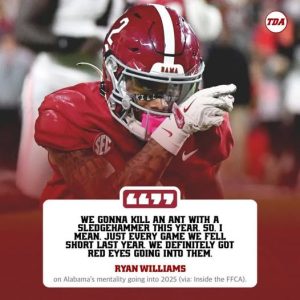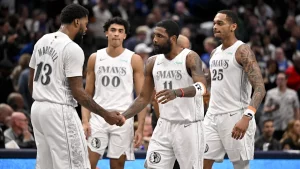
The NRL judiciary’s recent decisions have sent shockwaves through the league, as some of the competition’s most impactful players—Penisini, Smith, Lawton, and Sorensen—have been handed bans that threaten to alter the trajectory of their respective teams and the entire season. This sweeping disciplinary action has ignited fierce debates among fans, analysts, and insiders alike, raising critical questions about the nature of the punishments, their timing, and the broader implications for the game moving forward.
At the heart of the controversy is the gravity of the incidents that led to these bans. Each player involved has been a significant figure on the field, known not only for their skills but also for their ability to influence outcomes in tightly contested matches. To see them sidelined at once is unprecedented in recent memory, compelling teams and coaches to scramble for adjustments while stirring anxiety over how such absences will ripple through the competition.
Penisini’s ban, for example, represents a major blow to his team’s forward pack. Known for his aggressive playing style and relentless work rate, Penisini has been instrumental in setting the platform for his team’s attacking plays. His absence will leave a glaring hole in the middle, forcing his coach to reconsider strategies and player rotations. The team’s morale, already fragile in a fiercely competitive season, is likely to take a hit as they try to compensate for the loss of one of their key enforcers.
Similarly, Smith’s suspension is stirring intense discussion. Smith, often regarded as a leader both on and off the field, carries the responsibility of guiding younger teammates and maintaining composure during high-pressure moments. His ban not only diminishes the squad’s on-field prowess but also challenges the team’s leadership structure. The timing could hardly be worse, coming as it does during a pivotal stretch where every point counts toward finals aspirations. Supporters are voicing concern, with many questioning whether the judiciary’s decision was proportionate or too harsh, fueling a growing divide in fan sentiment.
Lawton’s sidelining compounds the challenges for his club. A dynamic and versatile player, Lawton’s ability to shift gears and adapt to various roles on the field has been a key asset throughout the campaign. His suspension forces the coaching staff into a tactical dilemma: how to replace a player whose skill set blends both creativity and physicality. The loss is not just about numbers; it affects the team’s identity and style of play. Analysts predict that the club will have to embrace a more conservative approach in upcoming matches, potentially sacrificing flair for stability.
Sorensen’s ban, perhaps the most contentious of the lot, has ignited a firestorm of debate regarding consistency and fairness in NRL judiciary rulings. Known for his hard-hitting defense and tenacity, Sorensen has often walked a fine line between aggressive play and crossing the boundaries of acceptable conduct. The judiciary’s decision to suspend him has been met with mixed reactions—some applaud the strict enforcement of rules, while others argue that Sorensen is being made an example of, caught in the crosshairs of a system seeking to crack down on physicality. This controversy is likely to persist, drawing attention to ongoing discussions about the balance between toughness and safety in rugby league.
The impact of these bans extends beyond the individual players and their teams. The NRL as a whole faces scrutiny over how disciplinary decisions are communicated and enforced. Critics argue that inconsistent rulings could erode trust in the system, potentially undermining the integrity of the sport. Fans crave transparency and fairness, especially when key players are affected in ways that can influence the standings and the excitement of the competition. The league must grapple with these concerns while striving to uphold standards that protect player welfare and promote a clean, competitive environment.
From a tactical standpoint, the forced absences are likely to reshape several matchups. Coaches will need to innovate, finding fresh combinations and strategies to plug the gaps left by Penisini, Smith, Lawton, and Sorensen. This may present opportunities for emerging talents eager to prove themselves on the big stage. However, it also raises the stakes for every team in the race for playoff positions, where every game is a must-win and every decision is magnified.
For supporters, the bans create a complex emotional landscape. Passionate fans are caught between disappointment for their sidelined heroes and a desire for justice and fair play. Social media platforms are awash with heated discussions, memes, and calls for appeals. The narrative around these suspensions will continue to evolve, influencing how the season is remembered and perhaps shaping future policies around player conduct.
In the broader context, this judiciary episode could serve as a turning point in the NRL’s approach to discipline. It highlights the tension between maintaining the sport’s physical intensity and ensuring the safety and longevity of its players. Rugby league has long been celebrated for its toughness and resilience, but the evolving standards of player welfare and public scrutiny demand a recalibration of what is acceptable on the field. The league’s ability to navigate these challenges will be critical to its reputation and growth.
As the suspended players serve their bans, their clubs must focus on resilience and adaptability. How teams respond to adversity often defines their character and potential for success. Will they rally and discover new strengths in the absence of key figures, or will the suspensions mark a downturn in fortunes? The answers will unfold over the coming weeks, adding drama and unpredictability to an already intense season.
In conclusion, the NRL judiciary’s decision to ban Penisini, Smith, Lawton, and Sorensen is more than just a disciplinary action—it is a seismic event with far-reaching consequences. It touches on themes of fairness, leadership, strategy, and the very nature of rugby league itself. Fans, players, coaches, and administrators alike will be watching closely as the season continues, aware that this moment could redefine the landscape of the game for years to come. The drama is far from over, and the true impact of these bans will be felt on and off the field, shaping conversations and competitions as the NRL moves forward.





